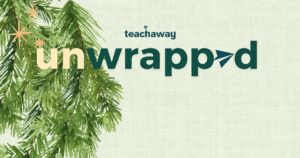Culturally responsive teaching goes beyond having an understanding of classroom composition. A high level of cultural competence in the classroom involves the ability to read and react to challenging scenarios that stem from cultural variety and differences among students and staff in the learning environment.
While virtues of tolerance and respect are paramount in a teacher’s ability to fully embrace a culturally diverse classroom, they don’t necessarily ensure the capacity to navigate the difficult situations. When it comes to acting with a heightened understanding of culture, teachers – at home and those teaching abroad – need to be some of the most well-equipped professionals in the world.
What is cultural competence?
The National Education Association does a great job of defining cultural competence:
Cultural competence is having an awareness of one’s own cultural identity and views about difference, and the ability to learn and build on the varying cultural and community norms of students and their families. It is the ability to understand the within-group differences that make each student unique, while celebrating the between-group variations that make our [world] a tapestry.
What is culturally responsive teaching?
When a teacher holds a high level of cultural competence and transmits this knowledge and understanding to their students and their families, we have culturally responsive teaching.
Ladson-Billings (1994) describes culturally responsive teaching as “a pedagogy that empowers students intellectually, socially, emotionally, and politically by using cultural referents to impart knowledge, skills, and attitudes”.
Why is cultural competence in the classroom important?
Earlier, I referenced “difficult situations” in the classroom. Let’s draw on an example of what one of these difficult situations might look like. Imagine you’re a teacher working full-time in a culturally diverse fourth grades classroom. You have a fantastic relationship with your students and you celebrate the differences among your students every day. Coming up next week is a class sleepover in the gym. You have one student – a recent immigrant from Syria – who hasn’t turned in his parent permission slip. When you remind him to bring the form in, he says he will.
Now just two days prior to the class sleepover, the student still hasn’t returned his slip. As a result, you decide to call his mother so she can grant him permission on the phone. However, things go a little bit differently than you’d expected. During the phone call with the boy’s mother, you learn that she does know about the event and that she’s chosen not to give permission for her son to attend.
You’re left feeling slightly confused, but mostly disappointed one of your students won’t be able to attend the sleepover with his classmates. In the end, you accept the parent’s decision and unfortunately have to hold the event without him.
You did everything you could with the information you had to help your student be there, but you can’t quite wrap your head around the choice his mother made. What if more context and an enhanced understanding of culture would have helped your student make it to the event? What if you’d known that when he and his family came to the United States and joined your school, they weren’t just immigrating to create a better future for themselves, they were escaping a traumatic past? What if you’d known the reason the boy and his family were opposed to the idea of him attending the sleepover was because the last time he’d been separated from his family overnight was when they had been displaced at a refugee camp in Syria?
While most applications of cultural responsiveness in the classroom aren’t quite like the scenario we just mapped out, that real life situation does a great job of exemplifying just how vital cultural competence can be.
And it’s only getting more integral to your classroom and to your personal success as an educator:
There is a cultural gap in many schools across the United States. The most recent projections from the Census Bureau shows that minority students will account for more than half of all students in US public schools by 2020. One out of every five students now speaks a language other than English at home. As a result of this significant student demographic shift, a growing number of US teachers are struggling with how they can better serve students from cultures other than their own. (Teach Away, PRWeb, 2017).
How can teachers become culturally responsive?
The best way for a teacher to become culturally responsive is through dedicated professional development.
We’ve done a lot of research on the professional development for teachers front at Teach Away recently, and one of our key realizations has been that there are plenty of growth-hungry teachers out there, many of whom fund their own professional development and are keen on advancing their culturally responsive teaching strategies.
In learning this, we worked with culturally responsive teaching experts to build the online professional development course, Culturally Responsive Teaching: Connecting with students and parents of different cultures.
The 90-minute course covers not only the theory behind creating a culturally responsive classroom, but also the practical strategies teacher need to make it happen.
Ready to get started? Visit the Culturally Responsive Teaching course page to enroll.
Looking for more information on the course or cultural competence? Check out this course review, or learn why teachers abroad need to make cultural competence a priority.




